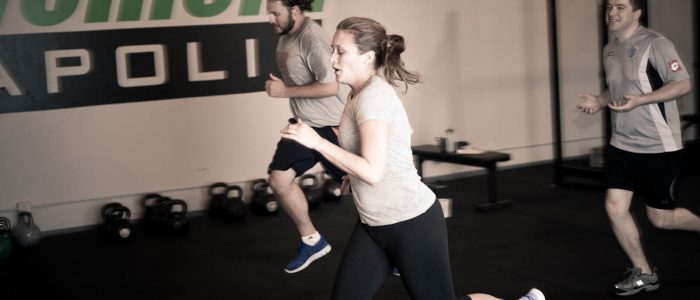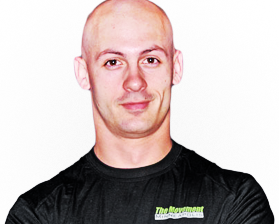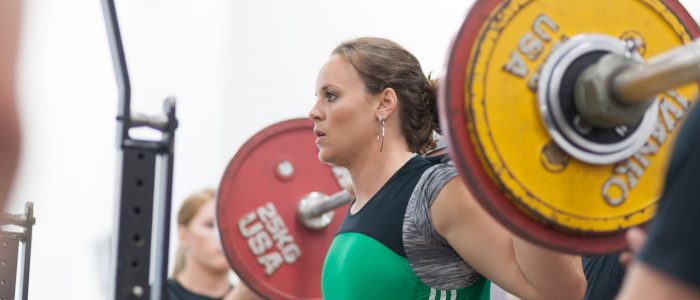
Running, as a physical activity is fantastic. It’s very accessible to most people, requiring little to no equipment, and is an excellent way to improve cardiovascular health not to mention if you’re running outside it’s a great way to get outside and be in nature.
As a workout – running can be a real problem. It seems like most runners fall into one of two categories, either treating their run like a fixed routine they do at the exact same speed, distance, and route every time, or they go to the other extreme, rigidly following a running program that has them doing all kinds of things that are… not smart.
That may be a slight exaggeration of the extremes, but it’s not far off the truth. Maybe in part because of the accessibility there seems to be even more myth and lore in running than in strength training – which has plenty of its own.
The good news is, running is fundamentally not different from strength training. Movement is movement, and the principles of physiology that guide training apply to one as much as the other.
Which means that we can apply the framework of biofeedback training to train smarter for running and endurance sport, just like we can train smarter in the weight room with biofeedback.
The first tool to apply is biofeedback testing for movement. How can you test running, it’s just one movement?
Let me ask you this: is sprinting the same movement as jogging?
Of course not. They’re not just different in degree, they’re different in kind. Which means that everything in between is distinct as well. And that in turn means you can apply testing to it just as you would for movement variations.
Let’s say you can average an 8 minute mile for extended distances. Running a 7:30 is going to be pushing it for you, and it’s going to shorten the distance you’re capable of quite a bit. Likewise, an 8:30 is going to further extend how far you can go. Each of these can be considered a distinct movement for the purpose of testing with biofeedback.
Pace is also related to intensity, so for the purposes of tracking training and understanding progress, think of your relative pace, on a scale of 1 to 10 (with 10 being an all-out sprint) as your intensity.
The other primary metrics of progress are volume and density. Volume is similar to strength training in that it’s a measure of total amount of work done, in the case of running, total distance covered.
Finally, the last metric of progress, density is where we diverge from the status quo a bit. We’re going to use density to measure the total distance covered over the total time, including rest periods – a key part of strength training but something utterly overlooked in most running approaches.
In strength training it’s common to do a working set, then rest for a bit before doing the next working set. Aside from occasional hard interval work, most runners treat their training as one big block that can’t be interrupted. But that’s often not how our physiology works. Things can improve disproportionately with just a little bit of rest. Just like two short minutes of rest can allow you to complete another series of reps you would never have been able to complete otherwise, a few minutes of rest can allow you to run for another significant bout – with higher movement quality!
But, we want to account for those rest periods and to be able to track them, which is where density comes in.
To put all these metrics together I think an example will be helpful.
Let’s say you go for a 5K (3.1 mile) run. You run at a 8:30 per mile pace, and it takes you 30 minutes to complete the run. You stopped two times along the way to walk & rest, which accounts for the roughly 4 minutes longer than it should have taken at an 8:30. Your total volume is 3.1 miles, your density is 9:41, and let’s say your intensity is about a 7 because you could have run much faster if you were pushing for a shorter distance.
Now that you have a baseline understanding of how we’re going to frame running training, we can look at how to make progress.
You start each day with the same premise:
“I can PR (set a personal record) today.”
The question is, how can you PR today?
The object of the training session is to ask the right questions about how exactly you can PR. Will it be a day to run further than you ever have? Will it be a day to run faster than you ever have? Will it be a day to run further, faster than you ever have? This process of questioning is what leads you to a PR every day.
Just like in a strength session, you start by selecting your movement. Running isn’t much different, but you’ll be selecting your pace as if it were a movement. If you know you’re an 8:30/mi average runner, you might test a 8:00, 8:30, and 9:00 pace to see which pace tests the best for that day. If you know based on your training cycle or what you want to do that day you’re going to want to run longer, you’d test generally slower paces. In any case, you want to test out a few options to find the best testing pace. To test the pace, literally run for a few seconds at that pace & gait pattern, then stop and check your range of motion just like you would for a movement.
Once your pace is set, you can set out for your run. Your goal is to run for as long as you can maintain that pace without reaching into elements of excessive effort. What does excessive effort look like? Generally we look for signs of changes in speed, breathing, tension, or alignment. Think about what it feels like to go for a run. Obviously you start breathing hard right away, but there is always a point where you have to work harder just to maintain the same pace, or your breathing becomes even more difficult, or you start feeling tension in different places. Those are signs of excessive effort, which we want to avoid. When you notice one of those signs, stop!
Check your range of motion as a biofeedback test. If your range of motion is still good, or has improved, take your first rest/walk period, and then run for another interval when you feel ready.
When your range of motion is worse after a run interval, your workout is over. You might be thinking this would leave you stranded miles from home, but in reality it very rarely happens that way.
Instead, what happens when you’re running at paces that you’re responding well to, resting when you’re reaching too far, and stopping when your body isn’t responding well anymore is that you run faster, farther, longer, and with less effort. After just a few sessions you get a good handle on predicting how far you should go, and what pace would be ideal to run at based on the ups and downs of your own physiology.
The other reason your run or workout would be over, is that you set a PR. Once you do the best you’ve ever done, there’s no need or benefit in going further or doing more unless you’re in a race. Applying the minimal effective amount of training stimulus is the best way to make progress with the least amount of recovery needed.
Each run or training session you should have in the back of your mind what a natural progression from the last few sessions would be and you’ll only confirm that by doing what tests the best. Your intuition and insight from what you know you did in the past should guide you, but the idea is never to push and force an arbitrary pace, distance, or time.
As a general structure for training, the format I have seen deliver the best results at the lowest cost of recovery and wear and tear is to do two runs a week, one short and one long, as well as two strength training sessions per week.
In your short run the focus should be on increasing your speed and the distance you’re able to push your higher end speed to. In the longer runs, you’re going for maximal distance at your most sustainable pace.
In your strength training sessions you’ll want to focus on big compound movements like deadlifts, squats, pushes and pulls with a particular focus on glute strength. However, do not neglect upper body work. It’s a lot more important than you think: your arms are moving back and forth for just as many reps as your legs are – this matters!


